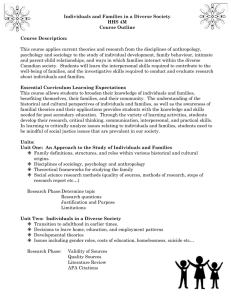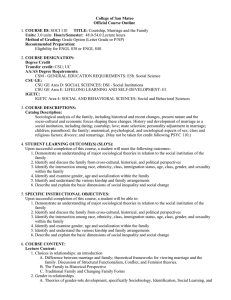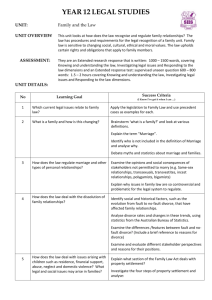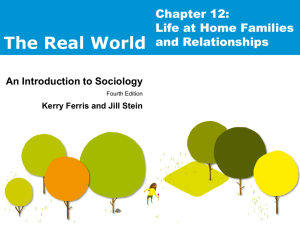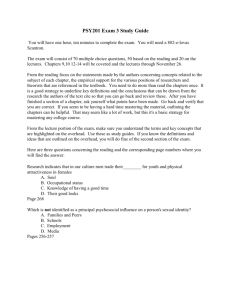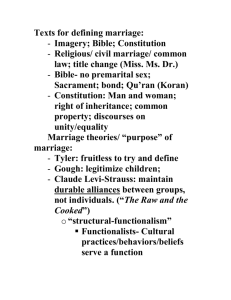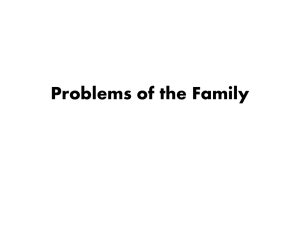Marriage and Family Final Exam Study Guide Chapter 1 key terms
advertisement
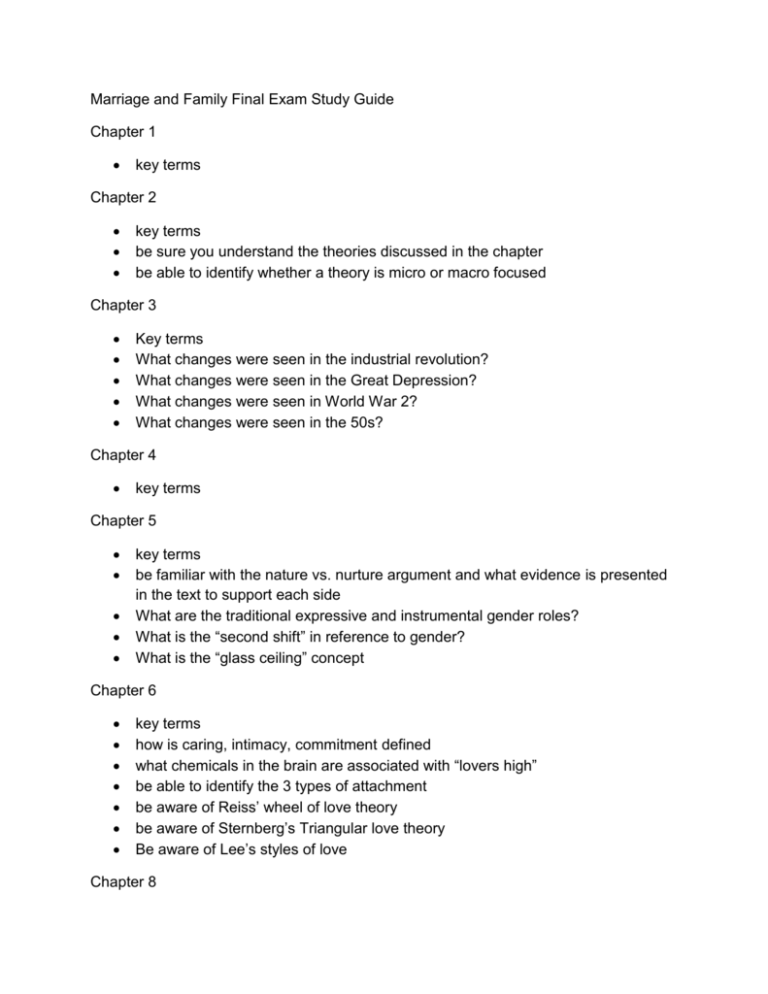
Marriage and Family Final Exam Study Guide Chapter 1 key terms Chapter 2 key terms be sure you understand the theories discussed in the chapter be able to identify whether a theory is micro or macro focused Chapter 3 Key terms What changes were seen in the industrial revolution? What changes were seen in the Great Depression? What changes were seen in World War 2? What changes were seen in the 50s? Chapter 4 key terms Chapter 5 key terms be familiar with the nature vs. nurture argument and what evidence is presented in the text to support each side What are the traditional expressive and instrumental gender roles? What is the “second shift” in reference to gender? What is the “glass ceiling” concept Chapter 6 key terms how is caring, intimacy, commitment defined what chemicals in the brain are associated with “lovers high” be able to identify the 3 types of attachment be aware of Reiss’ wheel of love theory be aware of Sternberg’s Triangular love theory Be aware of Lee’s styles of love Chapter 8 key terms what are the manifest and latent functions of dating know the social exchange and equity theories Homogamy and filter theories assert that we sift through the available dating candidates by using filters. What are the main filters discussed in out book? Chapter 9 key terms on page 257 Micro and macro level factors that affect our decision to marry. Why are many African-Americans delaying marriage? (We discussed one of these reasons extensively in class.) Across all ethnic groups, what is the main reason for delaying marriage? What is the selection effect? What is the inertia effect? Chapter 10 What did Cuber and Haroff say about intrinsic and utilitarian marriages? What is marital stability? What ingredients are necessary for a healthy marriage? Which issue is the top of the list that couples fight about? Be aware of the communication pitfalls we discussed. (John Gottman) Chapter 12 key terms on page 349 Erickson’s 8 stages Baumrind’s types of parenting. Including the 2 dimensions. Chapter 14 Key terms on page 412 except for the last 3. Who are people more likely to be killed or assaulted by? How does abuse effect self-esteem and learned helplessness? Be aware of examples of physical, sexual, and emotional abuse. Be aware of the 3 stages of the cycle of violence. Be aware of the 8 reasons listed why women stay in abusive situations. How does abuse effect children? Be aware of the 5 theories explaining family abuse and violence. What is the single best predictor of child abuse and neglect? Chapter 15 Key terms on page 443 Be aware of the phases of separation Be aware of the trends in divorce statistics Types of divorce: emotional, etc. What is the number 1 reason cited for their divorce? What did the Child Support Enforcement Amendment do? Be aware of the macro, demographic, and interpersonal reasons for divorcing. What effects of divorce on children did Thornberry and others find? Chapter 16 Key terms on page 470 How many remarriages start with cohabitation? Why are older women less likely than men to marry? Know the stages of remarriage: emotional, etc. Be aware of the myths about remarriage. Be aware of the issues of naming, sexual boundaries, distributing economic resources, distributing emotional resources, and establishing discipline and closeness.
